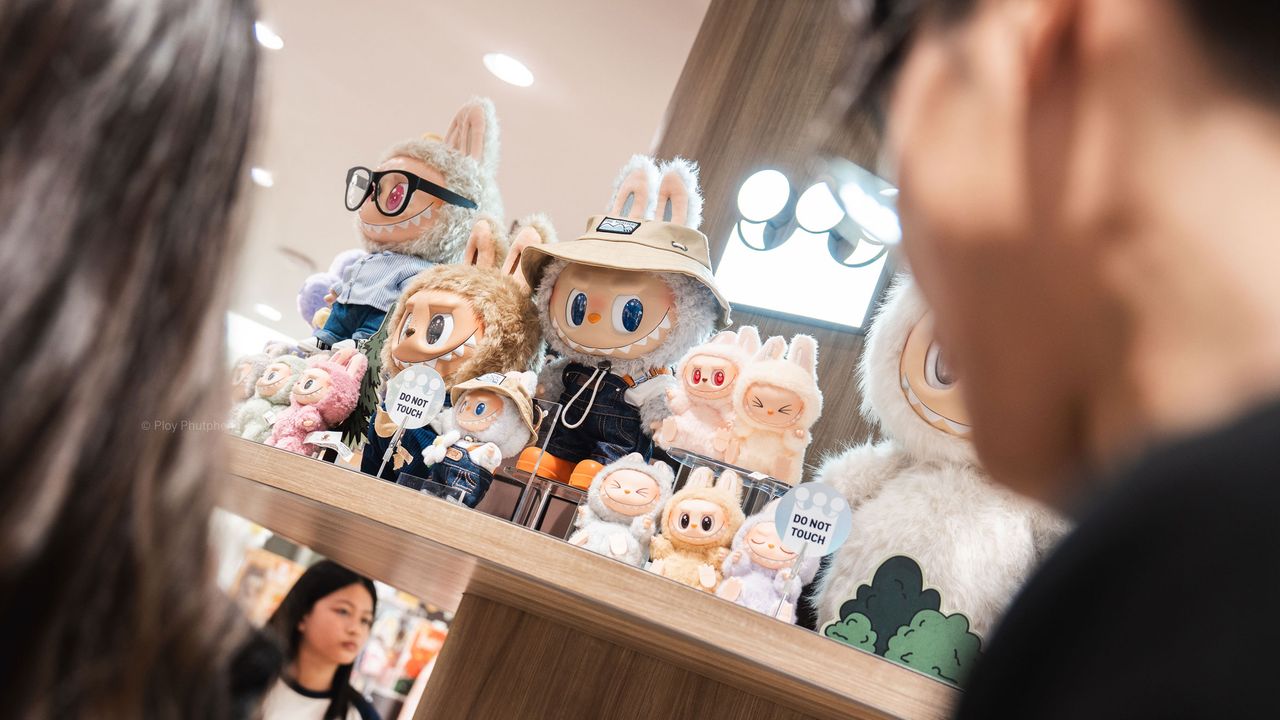The sudden explosion of the Labubu toy phenomenon offers a fascinating lens through which to examine the intricate currents of contemporary consumer culture. What began as an artistic creation has rapidly transcended its niche origins, morphing into a widespread obsession that speaks volumes about our collective desires and the sometimes perplexing paths of modern trends. These tiny, grinning figures have infiltrated mainstream consciousness, prompting a deeper look into the forces that propel such rapid and pervasive cultural crazes.
The genesis of the iconic Labubu design traces back to 2015, the brainchild of Hong Kong-born, Netherlands-raised artist Kasing Lung. Lung initially conceived these distinctive characters for his intriguing book series titled “The Monsters,” laying the groundwork for what would become a global sensation. The crucial turning point arrived in 2019 when Lung strategically licensed the Labubu intellectual property to Pop Mart, a burgeoning Chinese toy company renowned for its collectible art toys and innovative marketing.
Labubu’s ascent from niche art collectible to mainstream icon was dramatically accelerated in 2024, catalyzed by an unexpected celebrity endorsement. When Lisa from the globally acclaimed K-pop group Blackpink was seen prominently displaying a Labubu from her purse, the impact was immediate and explosive. This single act ignited a runaway Labubu madness, catapulting Pop Mart’s revenue to an astonishing $1.8 billion by the end of that very year, underscoring the immense power of influencer culture in driving Consumer Trends.
The pervasive nature of the Labubu obsession is now undeniable, manifesting in various quirky encounters across daily life. One recent observation included a Labubu adorned in what appeared to be knockoff Prada, stylishly dangling from a work bag. Another instance saw the heroic mascot Ellie the Elephant, from a recent Liberty game at the Barclays Center, sporting a miniature purse with a Labubu attached, further cementing the toy’s status as a ubiquitous Cultural Phenomenon in unexpected spaces.
Part of the allure surrounding Labubu toys stems from their unique distribution model: the thrill of the mystery box. This element of chance, where collectors acquire a blind box hoping for a rare or desired variant, adds an addictive layer to the pursuit. The burgeoning market has also spawned clever imitations, affectionately dubbed “Lafufus,” highlighting the toy’s widespread appeal and the informal economy it has generated. Beyond their visual charm, the very name “Labubu” possesses an inherent playfulness, much like an amusing typo in a group chat that becomes an inside joke, contributing to its sticky popularity.
However, the Labubu craze offers more than just whimsical enjoyment; it serves as a potent microcosm of contemporary consumerism itself. While often attributed to their unique aesthetic and the sheer fun of collecting, the deeper resonance lies in their alignment with a broader societal inclination. These Collectible Toys tap into a collective desire for lighthearted engagement in an increasingly complex world, offering an accessible form of escapism and a touch of playful absurdity.
Ultimately, the escalating fascination with Labubu can be viewed as a poignant symptom of a larger cultural shift. It embodies the current landscape of consumer culture as a series of dramatic swan dives into what can only be described as a giddy meaninglessness. This isn’t merely a superficial trend; it functions as a tacit, collective admission that society has, in many ways, shed the weight of conventional meaning, embracing instead the spontaneous, fleeting joy found in phenomena like the Labubu Art Toys.






Leave a Reply